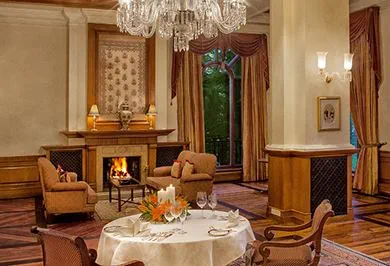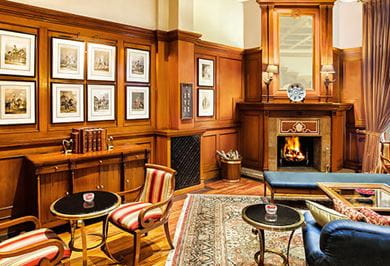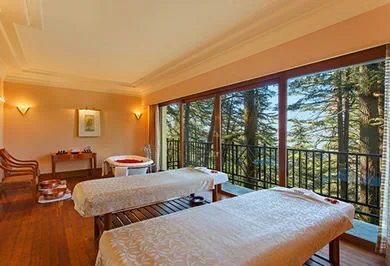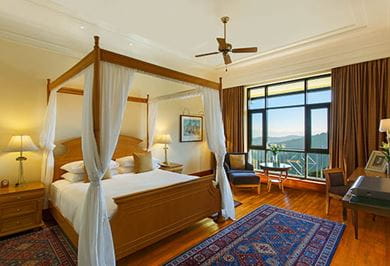







I sometimes feel as though the legacy of Lord Kitchener has pursued me all of my life. I studied his career in history class at school.
I learned that he was the hero of Khartoum and the Boer War. He was Commander-in-Chief of the Indian Army in the early years of the 20th Century and was a celebrated military figure throughout the British Empire.
But while the school text books made him seem boring, Lord Kitchener underwent a strange, retro revival in the late 1960s and the early 1970s. In the heyday of Swinging London, somebody rediscovered the old recruitment poster in which the noble Lord asked Brits to “Join Your Country’s Army! God Save The King”.
It turned up on the walls of every student hostel or bedsit as a jokey reminder of the empire that had once been. As a child, my primary fascination was with Kitchener’s moustache. It was thick, luxuriant and extended far out of the contours of his face as though it had a life of its own.
By then Lord Kitchener had achieved another milestone. The trendiest boutique in Swinging London was called “I was Lord Kitchener’s Valet” and offered modern takes on the great man’s uniform redesigned for hippies, rock stars and trendies. In the process, Kitchener became famous all over again though perhaps not in a way that would have gladdened his heart.
(There even was a hit song called I was Lord Kitchener’s Valet! The lyrics went “Oh, Lord Kitchener, what to do, Everyone is wearing clothes that once belonged to you If you were alive today, I’m sure you would explode”.)
I mention all this by way of background so you will understand my excitement when I arrived at the fabulous Wildflower Hall near Shimla and discovered that my room was named after—who else? —Lord Kitchener. Photographs of the old boy hung all over the hotel. Was there no getting away from Kitchener?
Intrigued, I looked up the history of Wildflower Hall. It turned out that when Kitchener was Commander-in-Chief of the British army and Shimla was the summer capital of the Raj, he was obliged to spend a lot of time in the area.
Shimla was boring and stuffy so aristocrats like Kitchener looked around for beautiful locations where they could build themselves large country houses. By that time, Kitchener, a man with an elevated sense of his own self-importance, had begun a feud with Lord Curzon, the Viceroy of India and Kitchener’s boss.
Curzon was no shrinking violet either. A famous doggerel about him begins “My name is George Nathaniel Curzon/I am a most superior person.” So a clash with Kitchener was inevitable. (Eventually, Kitchener won and Curzon went back to London.)
But when Curzon and Kitchener were not fighting about matters of state, they were engaged in the war of the country houses. Curzon had built himself a lovely home in the hills of Mashobra, near Shimla. So Kitchener was determined to outdo him. He looked for a location that was even lovelier and found it a short distance away from Mashobra. It easily overshadowed Curzon’s estate and Kitchener bought 22 acres of forest on which he built the original Wildflower Hall, his glorious country residence in 1902.
But Kitchener was too important to stay in one part of the Empire for too long and soon he was off to take up a new posting in Egypt and had little time for Wildflower Hall, leaving his magnificent home unattended.
Eventually, in 1925, the property was razed. It was too vast (and probably too expensive) for anyone to consider turning it into a private residence, now that the era of Curzon and Kitchener has passed. So it became a hotel, a solution that allowed for a small army of gardeners to look after the vast grounds and woods.
In the 1990s, a fire destroyed the hotel and the Oberoi group was called in to build another hotel on the site. The Oberois remained true to the original desire of Lord Kitchener and built a huge mansion that would easily outshine anything that Curzon or any other of Kitchener’s rivals could ever have built.
That is the modern Wildflower Hall, the finest hotel north of Delhi.
The exteriors recall the Raj with their turrets and a typically Himalayan roof. There are four floors of rooms (85 in all) with the public and service areas on the ground floor and lower ground floor. A part of the structure extends into the forest on the south side.
The lavish interiors would have done Kitchener proud. Generously upholstered lounge chairs, tufted sofas fill the rooms and there is masses and masses of Burmese teak on the walls, ceilings and everywhere. The levels of luxury are simply stunning. Though I was in the Lord Kitchener suite, obviously the eponymous lord had never actually stayed there. On the other hand, it was considerably more luxurious than anything they could have managed in his era. Whenever he was gazing down at us (or looking up at us), from wherever he is now, the old boy must have given his impressive moustache a satisfied twirl, pleased that, in this respect at least, his legacy had outdone all his Raj contemporaries.
But as lovely as the mansion is, it is worth remembering that Kitchener was originally drawn to this estate because of its external beauty, not the elegance of its interiors. And the point of Wildflower Hall (despite my curious obsession with Kitchener) is the stunning location.
Each morning when I woke up, I would draw the curtains and inhale sharply. The view was simply stunning. The bluest skies, wisps and puffs of cloud, green forests, densely wooded mountains and the hotel’s own manicured central lawn. It is hard to think of another Indian hotel that offers such a spectacular view.
You can, if you like, enjoy the luxurious rooms at Wildflower Hall but we were escaping from the heat of the plains so we launched ourselves into the cool outdoors. Every meal was either alfresco or something like it. We ate lunch on the terrace overlooking the mountains and eventually we loved it so much that we spent all our afternoons there. We would read, I would write and every now and then, I would look at the view and pinch myself to check if I was dreaming.
We had dinner one night in a gazebo on the grounds of the hotel, enjoying kababs that were grilled in front of us by a team of chefs. This made us feel very spoiled and pampered so we asked if we could do something a little less fancy.
The hotel suggested that we went for a bracing walk in the forest that is adjacent to the main building. A very knowledgeable local guide arrived and took us through the hills, pointing out local trees and telling us about the heritage of the area till it was time for our picnic lunch. I had visions of roughing it out (well, sort of, anyway) but when we came to a gap in the woods, I was staggered. The hotel had set up a lovely picnic table with chairs. In case it rained (which it did not) there was also a little tent for us to find shelter. The food, served by an Oberoi butler, was terrific. And it made me realize that there are picnics, and then there are Oberoi picnics.
We were so taken by the idea of the luxury picnic (I say this with the appropriate amount of shame) that the hotel arranged for us to go, on another day, to a wonderful century-old cottage in the village of Mashobra. The cottage was perched at the edge of the cliff and we had fabulous 360º views of the landscape, that distinctive mixture of hills, valley, forests and very blue skies.
Through all our time there, we tried to enjoy a judicious mix of activities, both indoor and outdoor. It made no sense to go to such a beautiful location and spend all our time indoors. On the other hand, it made even less sense to treat the stunning hotel as just a place to sleep at night. So we made the most of the hotel too. We were delighted to discover a working fireplace in our room and lit a crackling fire one evening, conscious that this was one of the few places in India where you needed to light a fire in June.
When it was time to go, I looked out of the window one last time and took a mental photograph of the view. Then I look in the walls of solid teak, the lush furnishings and thought back to the time when Lord Kitchener lived on this site. Raj food was usually disgusting and the plumbing was rudimentary. Obviously, the victor of Khartoum had never enjoyed as wonderful a stay as we had. His Wildflower Hall had outclassed anything Lord Curzon and his contemporaries had built. But this Wildflower Hall easily outclasses any residence that any of the lords and Viceroys of the Raj built or lived in during the heyday of their Empire.
And this one is hundred percent Indian!
Nita Mukesh Ambani Cultural Centre brings to the city a vibrant space for the world of music, dance, ...
In 1992, Prince Charles, the Prince of Wales and heir to the British Throne visited India along with ...
Should one risk a vacation in the middle of pandemic? I thought long and hard about it before decidi ...
The Mona Lisa traces back herself to her artist Leonardo da Vinci’s life at Château du Clos Lucé in ...
The Oberoi Beach Resort, Lombok has undergone rejuvenation and evolved into a destination of unrival ...
A vivid tour through the hottest Bree Street’s central reaches that we call home to the ethical food ...
The Oberoi Beach Resort, Sahl Hasheesh, offers a royal experience amidst the colourful sea life at E ...
Located at the junction of Aravali and Vindhya ranges, Ranthambhore National Park was once a private ...
William Shakespeare lived through one of the most turbulent yet thrilling era’s of English history ...
While central Melbourne has its own allure, the city’s charm lies in its diverse suburbs, each of wh ...
Adrian Rohnfelder, a photographer with a keen interest in volcanoes and adventure, shares his extrao ...
Witness the journey of a wooden instrument that broke all the records to become the backbone of Arab ...
To leap beyond imposed restrictive limits of existence is precisely what Dimpy Menon’s artworks spea ...
More than just a circus, Phare performers use theater, music, dance and modern circus arts to tell u ...
Peru is one of the peak experiences in travel. Nowhere on earth is there such an incredibly wide ran ...
The Oberoi Sukhvilas Spa Resort, New Chandigarh helps you get in touch with yourself so that you liv ...
The establishment of the British Empire greatly influenced the architecture and culture of India an ...
Complete with red sandstone fort, torch lit ramparts and ‘Haveli’ mansions, The Oberoi Rajvilās, Jai ...
Come aboard The Oberoi Zahra, Luxury Nile Cruiser for a delightful mix of luxury and history ...
The incredible Turtle Sanctuary at The Oberoi Beach Resort, Bali, is a must-visit for nature lovers ...
As part of the Beatles, arguably the most iconic rock band of all time, John Lennon and Paul McCartn ...
Oberoi Hotels & Resorts have won the hearts of many with its exquisite charm and glorious stays ...
When I work with a subject, whether it is landscape or nudes, I’m in a relationship with whatever’s ...
Portugal’s capital city of blues from the ubiquitous blue tiling adorning buildings to fado, the sou ...
My conceptual concerts initiate dialogue using various art forms. I wanted to produce works that are ...
From sticky toffee pudding and gastro pubs, to farmers markets, heritage farm meat and stalls housin ...
German art historian Sebastian Schütze, a creative master and precise in technique, captures the hum ...
The Italian art witnessed drastic movements in the period between 1850 to 1950, giving a platform fo ...
All associated with Mughal emperors, maharajas and their courts, the Al Thani Collection is a marvel ...
In the age of art as speculative and subjective, beauty can seem very much beside the point. But sta ...
Complex narratives are the peak of excitement for me. Narratives like double portraits provide stimu ...
At the helm of his eponymous brand, Fendi and Chanel, the late Karl Lagerfeld became as iconic as th ...
Essentially an attempt to replicate a beautiful representation on the canvas, I hope to convey the c ...
The Oberoi, New Delhi’s makeover is an inspiration of the contemporary interpretation of Sir Edward ...
An institution rather than a hotel, the glorious Oberoi Grand, Kolkata is the place tradition calls ...
Ginarte is a journey into beauty, a harmonic synthesis, an expression of strength and delicacy, a hy ...
Oberoi Hotels & Resorts has been ranked the world’s Best Hotel Group at the Telegraph Travel Awards ...
With more than 400 displays, Toward a Concrete Utopia: Architecture in Yugoslavia, 1948–1980, is the ...
Life of the royals in medieval England, especially the queens, was full of intrigue and scandal but ...
The Asian art scene, though young, is booming and art fairs continue to play a significant role in t ...
From ebonised Georgian bracket to 19th-century French brass carriage and the 21st-century Jaeger Le- ...
The East India Company was one of the most powerful commercial endeavours the world has ever seen, d ...
With more than 400 displays, Toward a Concrete Utopia: Architecture in Yugoslavia, 1948–1980, is the ...
The Oberoi Rajvilas, Jaipur offers an exemplary experience of luxury that transports you to the gold ...
Winner of “Middle East’s Leading Luxury City Hotel” for five consecutive years by the coveted World ...
With elegantly designed villas that offer the best of interiors to its patrons, The Oberoi Beach Res ...
On the north-west coast of Africa lies Casablanca, an ancient exotic land embraced in the sweeping s ...
The new uniforms adorning the staff at The Oberoi, New Delhi are a reflection of The Oberoi Group’s ...
Swan Lake, the iconic ballet composed by Pyotr Ilyich Tchaikovsky in the late 19th century, continue ...
The Buddha, in his many iterations across South Asia, is most exquisitely represented in gilt-bronze ...
At luxury watch brand Carl F Bucherer, design is about bringing together form and function to create ...
Queen, temptress, politician, murderer: Cleopatra remains an object of fascination for writers, arti ...
Go pedal-to-metal with the best track-ready cars unveiled at the 2018 Geneva Motor Show ...
With an enchanting combination of natural splendour, medieval heritage and modern luxury, The Oberoi ...
The Oberoi Udaivilas, Udaipur, brings together the finest in nature, luxury and impeccable service t ...
The Oberoi Amarvilas, Agra, has been voted the Top India Resort Hotel at the Travel + Leisure, USA W ...
Swiss Photographer Christian Tagliavini captures 15th and 16th-century courtly culture in a series o ...
As innovations in air travel bring the UK and Australia closer, the Kangaroo Route – once stretched ...
The Oberoi, Gurgaon offers a traveller more than just the opulence of a five-star hotel: it is a san ...
In the year 1936, legendary artist Henri Matisse executed with the utmost elegance a charcoal portra ...
The elegant suites at The Oberoi, Mumbai, provide an unrivalled experience of The Oberoi Group’s sig ...
The art collection of David and Peggy Rockefeller has garnered the highest total for any private col ...
The Oberoi Philae, Luxury Nile Cruiser takes you through the highlights of the Egyptian river on a s ...
Complementing its signature old-world charm with the finest of contemporary facilities, this Oberoi ...
Truly great experiences in life, are integral to a design sensibility that seeks to create a visual ...
Modern Indian cuisine is coming into its own, with pioneering Indian chefs like Vineet Bhatia, Gagga ...
Sailing along the River Nile aboard The Oberoi Zahra, Nile Cruiser, explore Egypt’s mystical tombs a ...
Late entertainer David Bowie’s art collection, recently auctioned by Sotheby’s, is an eclectic mix o ...
Majestic lions, magnificent wild elephants and an untouched, untainted landscape weaving together na ...
From Jean Paul Gaultier and Christian Dior to Emilio Pucci and Christian Louboutin, international fa ...
world are among the most highly coveted collectible antiques today ...
Home to the perfect confluence of nature and concrete, Al Zorah gives to luxury travellers the getaw ...
An institution rather than a hotel, the glorious Oberoi Grand, Kolkata is the place tradition calls ...
Combine the exhilaration of a jungle adventure with the relaxation of a luxurious retreat at this sp ...
From exotic varieties to beautiful native species, trees can transform your estate into your own sli ...
The East and the West might speak distinct design languages, but bring them together and a spectacul ...
In the land of the midnight sun, a quintessential family vacation is punctuated by a breathtaking ex ...
The misty Wuyi mountains in Fujian, China are home to Da Hong Pao tea, which can sell for more than ...
Award-winning architect Francis Kéré talks about his design journey and giving back to his homeland ...
In Milan, designer Arthur Arbesser and his associates work and play together, perhaps setting a temp ...
Magnates of the luxury world have been taking charitable steps into the world of European applied ar ...
The culinary offerings at The Oberoi Beach Resort, Al Zorah, reflect its vibe of simple sophisticati ...
The works of 18th-century chaser-gilder Pierre Gouthiere stand testimony to the aesthetic opulence o ...
The inner health of an organisation is as important as the external forces that influence its ascent ...
The artistic traditions of mounted porcelain and enamelling lend a whimsical air to some of the most ...
The finest works of literature can sometimes make for the finest works of cinema, and the list of fi ...
The iconic Victorian writer and social critic, seen through the eyes of his great-great-great grandd ...
Be a part of the legacy of turtle conservation on the island of Bali at this luxurious beachside hav ...
With impeccable culinary offerings, Mauritian archaeological heritage and the best location on the i ...
As The Oberoi, New Delhi revels in its newly reopened avatar, take a trip down memory lane and follo ...
Passion, craftsmanship and innovation are the defining aspects of Automobili Lamborghini’s design ae ...
As the universe of food undergoes a rapid transformation across the world, The Oberoi, New Delhi’s a ...
Fashion photography is about more than garments and labels - it is about penetrating the physical fo ...
With an artistic masterpiece by Sir Winston Churchill, The Goldfish Pool at Chartwell, recently goin ...
Balancing modernity with its centuries-old heritage, Amsterdam is a study in splendour and historica ...
Dance does not exist in a box and no rules must necessarily govern it. It is a thing of beauty, myst ...
Nestled within an impregnable valley, the “lost city” of Petra is a spectacular expression of cultur ...
Oberoi Hotels & Resorts has been ranked the world’s Best Hotel Group at the Telegraph Travel Awards ...
Ayurveda, natural healing and mindfulness together create a space of rejuvenation like no other at ...
Beginning in the national capital, make your way through these travel hotspots across India that ref ...
Leonardo da Vinci’s Salvator Mundi claimed a place in auction history recently, setting a new record ...
As the beacon of Western classical music continues to shine bright, a younger generation of musician ...
One fine April morning, 16 actors and technicians set out to take Shakespeare’s Hamlet around the wo ...
From gold snuff boxes inset with diamonds, amethysts and sapphires to ornately enamelled perfume fla ...
The written word, in conjunction with innovations, lies at the very heart of history, shaping cultu ...
August 1947: It had been more than a week since freedom had arrived and the country partitioned. But ...
The Biennale des Antiquaires culminated this year in stunning glory, only to cast its spell afresh n ...
Over the years, I must have observed and recorded the behaviour of at least 125 tigers in Ranthambho ...
The ancient science of Ayurveda tells you how best to enhance your beauty and nourish not only your ...
The gleaming, fluorescent-green topsides of the superyacht Inouï may scream luxury at the Maxi Yacht ...
The world is changing and it is not changing to the benefit of the manufacturers and retailers of so ...
This season, drive in style with these uber-luxurious four-wheeled debutantes ...
The phrase, ‘home is where the heart is’ acquired a new meaning for the children at SOS Children’s V ...
India’s finest private collections of classical Indian art mindfully preserve its creative heritage ...
Make memories last forever by taking your most cherished photographs beyond the frame and photo albu ...
With breathtaking views, luxurious rooms, rejuvenating spa therapies and a state-of-the-art golf cou ...
Seamlessly weaving together traditional elements of Indian architecture, aesthetically landscaped ga ...
Exquisite collectibles going under the hammer are letting connoisseurs acquire a little bit of histo ...
Coming to India in 1865 as the principal of an art school, John Lockwood Kipling made an invaluable ...
When travelling along the path of kings and queens, The Oberoi Hotels & Resorts offer a palatial pla ...
For luxury travellers, the sky is the limit, quite literally, as a gourmet open-air meal at the base ...
From 18th-century ormolu clocks framed by candelabra to enamelled 19th-century timepieces, mantel cl ...
The Emirate of Ajman is home to The Oberoi Beach Resort, Al Zorah, a modern architectural masterpiec ...
The last queen of France was a great commissioner of beautiful things, and several of the shops she ...
From exclusive garments manufactured in Italy to style inspirations drawn from art, this is what the ...
A new facet of Pablo Picasso’s artistic repertoire is taking over the international art market his c ...
Every bottle of vintage wine has a story to tell. We give you the narratives behind five of the fine ...
In the universe of Modern art, rivalry is a complex dynamic that enables one artist to be influenced ...
A story is conditional – it is a matter of perception and might not always be, subliminally or even ...
From unique water and land activities to certified diving courses, desert tours and more, this all-s ...
Enrich your stay in Ranthambhore at this opulent jungle resort, in close proximity to nature, yet ne ...
With performative nuances and provocative appeal, Western classical music has evolved into a complex ...







Second child until maximum age of 12 years will be accommodated in the same room at additional supplement. The additional amount is not included in the room price mentioned and shall be payable at the hotel during check-out.
400 AED (including tax)
250 AED (including tax)




